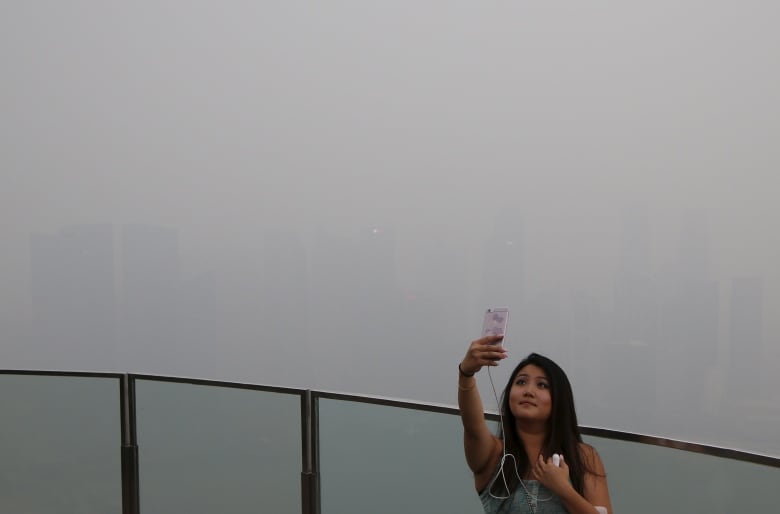Photos show 10 of the worst weather disasters
Expect more weather-related disasters in the coming years, UN report says

A recent United Nations report points to a dramatic rise in the intensity and frequency of weather-related disasters like heat waves, droughts and hurricanes and the hardest-hit countries — the U.S., China, India, Philippines and Indonesia — should prepare for more.
Following is a look at 10 of the worst weather-related disasters in the past 20 years.
Indonesia's peat fires
Haze from Indonesia's massive wild fires (an annual problem caused by the illegal burning of forest and peat lands) are especially bad this year thanks to El Nino. Neighbouring Singapore and Malaysia, downwind from the choking haze, have offered to help the Indonesian government curb the practice which is causing record pollution levels across Southeast Asia.

2015 hottest year ever, until next year
Summer temperatures hit record levels in Europe once again this year, beating the record set last summer. Globally, 2015 went into the record books as the hottest year ever, thanks to El Nino, and 2016 will be even hotter, according to a recently released World Meteorological Organization report.

More and hotter heat waves
In 2003, some 70,000 heat-related deaths were reported across Europe, with nearly 15,000 in France alone. Globally, the year 2002 was particularly harsh, according to the UN report, with an oppressive heat wave sending the temperature in Indian cities like Allahabad, pictured below, to 46 C and above for days on end, resulting in dozens of heat-related deaths.

Strongest tropical cyclone ever recorded
Typhoon Haiyan, or Yolanda as it was known in Philippines, swept across the South Pacific with devastating effect in November 2013 leaving thousands dead and millions more homeless and exposed to disease. Storms like Haiyan, one of the deadliest in modern history, are expected to increase in frequency, according to the UN weather disasters report.


Sandstorms blanket Beijing
China also experienced a dramatic rise in the number of weather-related disasters in the past 20 years. Among the more persistent problems are cyclonic spring winds that seasonally stir up huge quantities of sand, affecting the air quality for millions of people in Beijing and other major cities. The worst sandstorm ever recorded hit the Chinese capital in 2002.

In Australia, drought is the new normal
Australia, already the world's most arid continent, is hoping a pioneering irrigation scheme will pass the test that is El Nino — the cyclical warming of Pacific sea-surface temperatures that makes the land Down Under even hotter. Drought and other extreme weather affects millions of people across the world, and experts warn that the intensifying weather pattern this year could emerge as one of the strongest on record.

Expect more disasters in the U.S., too
California's historic, years-long drought contributed to one of the state's worst forest fire seasons on record this year. Thousands of people were evacuated from dozens of communities as windblown flames consumed millions of hectares of water-starved forests, ranch lands, vineyards and homes.

Hurricane Sandy worst in years
Hurricane Sandy, which devastated large sections of the U.S. Atlantic coast in 2012, continues to rack up a damage bill in excess of $75 billion US. It's the second costliest natural disaster in U.S. history after Hurricane Katrina, which killed nearly 2,000 people, in 2005.


Isaac slams Gulf Coast same year as Sandy
Before Sandy struck in 2012, and nearly seven years to the hour after the Katrina disaster, Hurricane Isaac made landfall in Louisiana, forcing evacuations and knocking out power to over 100,000 homes.

UN: More bad weather in the forecast
Since 1995, weather disasters have:
- Killed 606,000 people.
- Left 4.1 billion people injured, homeless or in need of aid.
- Accounted for 90 per cent of all disasters worldwide.
Cylone Nargis a 'mega-disaster'
One of the deadliest disasters in the past decade, according to the UN report, was Cyclone Nargis, which killed 138,000 in Burma in 2008.


The release of the UN report comes a week before world leaders gather in Paris for the COP21 conference to discuss plans to curb greenhouse gas emissions and prevent world temperatures rising.